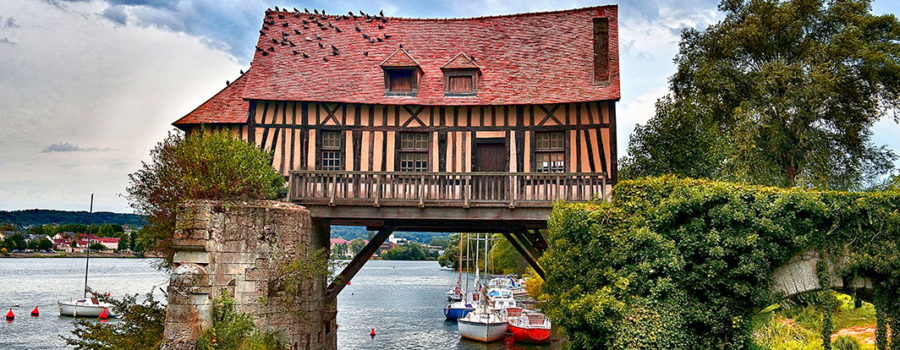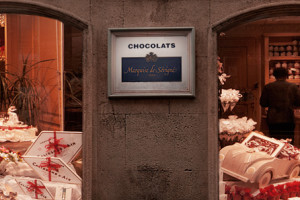French Cooking Terms – Part 2, E-M
Part 2, E-M.
We have compiled a list of French cooking terms translated for better understanding in the English language:
French Cooking Terms (Part 1, A-D)
French Cooking Terms (Part 3, N-Z)
French Cooking Terms beginning with E
Emballer: A French term meaning to wrap an article of food which is to be poached or simmered in stock. The food item is usually wrapped in cheesecloth to hold it together. It also refers to the filling of a mould to be cooked, such as paté.
En croute: Wrapped in pastry and then baked in an oven.
Entrecôte: Sirloin steak.
Endive: chicory salad green.
En papillote: To cook in a bag so the food’s own steam cooks the contents.
Escargots: snails (as food).
Estouffade: A French term referring to a dish whose ingredients are slow cooked, also a clear brown stock used to dilute sauces, ragouts, and braised dishes.
Etoffé: stuffed.
Escalope: A thin, boneless slice of meat.
French Cooking Terms beginning with F
Farce: Stuffing.
Filet mignon: A cut of beef taken from the center or towards the small end of a tenderloin. In france Filet Mignon is usually pork.
Flambé or Flamber: to cover food with a brandy or other liqueur, ignite, and bring to the table while still flaming.
Fond: The french word for a stock.
Fondant: A sweet made of soft paste of flavored and colored sugar often used for icing cakes.
Fondue: melted, any dish in which bits of food are dipped into a hot liquid for example a cheese sauce or melted chocolate.
Friandise: A French term for confections such as petits fours or truffles, eaten between meals or as an assortment served after the dessert course with coffee or tea.
Frais or fraîche: fresh or chilled.
Fraise: strawberry.
Fraise des bois: wild strawberry.
Framboise: raspberry.
Frappé: a drink made with crushed ice and blended to a slushy consistency.
Fricassée: ingredients braised in wine sauce or butter with cream added; currently denotes any mixture of ingredients cut up and stewed in a sauce.
Frit(e): Fried
Fromage: cheese.
Fruits de Mer: A French term referring to any seafood or combination thereof.
Fumé: Smoked
French Cooking Terms beginning with G
Ganache: a classically rich mixture of chocolate and crème used as filling for cake or truffles, or as icing.
Garde Manger: A French term for the member of a professional kitchen in charge of cold items, salads, and hors d’oeuvres.
Gargote: An unflattering French term referring to any small, cheap, dirty restaurant serving poor quality food.
Gastronome: A person with a refined palate or connoisseur of good food. While appreciating the most refined products of the culinary arts, the true gastronome enjoys them in moderation. Also means fine dining.
Gâteau: a large rich cake often with layers of cream or fruit, any variety of cake.
Glacé: ice cream.
Glace de Viande: Reduced brown stock used to add color and flavour to sauces.
Gratiner or Au Gratin: To sprinkle the surface of a cooked food with breadcrumbs and butter, and sometimes cheese and left brown under heat. The finished food is referred to as au gratin as in au gratin potatoes.
Gougere: Choux pastry puff flavoured with cheese, usually a gruyere cheese.
French Cooking Terms beginning with H
Haute cuisine: (upper kitchen) high quality cooking following the style of traditional French cuisine.
Herbes de Provence: A specific blend of herbs indigenous to the southern regions of France, it is to the used to season a variety of dishes. This common blend usually contains lavender, marjoram, rosemary, savory, basil, and sage.
Hollandaise: (from Holland) a sauce of butter, egg yolks, and lemon juice.
Hors-d’œure: An extra dish usually an appetizer (US) or starter (UK).
Hôteliére: The French term given to sautéed or grilled meats and fish dishes served in or with hotel butter.
Huile: The French word for “oil”, usually referring to cooking oil.
French Cooking Terms beginning with J
Jambon: The French word for “ham.”
Jambonneau: A French term for the knuckle end of a pork leg. It’s usually braised or poached, eaten fresh, smoked, or salted. Also used in reference to a preparation of stuffed chicken leg because of its similar shape.
Jambonnière: A cooking vessel with deep sides, handles on each end, and a lid, having the same shape as a ham. Used for cooking a whole leg or shoulder of pork.
Jardiniere: Vegetables cut into batons — similar to julienne but thicker.
Julienne: A standard Julienne cut is 4mm x 4mm x 5cm, or ⅛ x ⅛ x 2 inches. ⅛th of an inch is approx. 3mm, but these sizes do vary.
Jus or Jus de Viande: A French word loosely translated into “juice”, but has a more specific meaning than the translation. In French cookery it is primarily a sauce made by diluting the pan juices of a roast with liquid then boiling it in the roasting pan until all of the sediment has absorbed into the stock. Also used to describe thickened or clear brown stock, especially veal. The juices squeezed from raw vegetables or fruits are also referred to as “jus.”
Jus Lié: Thickened gravy.
Julienne: cut into slivers, usually vegetables or meat.
French Cooking Terms beginning with K
Kir: an aperitif made with crème de cassis (black currant liqueur) and most commonly dry white wine, but sometimes red wine.
French Cooking Terms beginning with L
La cuisine: The kitchen
Liaison: Ingredients used for thickening sauces, soups or other liquids.
Lait: milk.
Legumes: vegetables.
French Cooking Terms beginning with M
Macédoine: A salad of small pieces of mixed vegetables or fruit.
Marmite: for a covered earthenware container for soup. The soup is both cooked and served in it.
Maison: “house”, the term is generally used to denote a specialty of the particular restaurant.
Marinade: A mixture of wine, vinegar, or other acidic liquid along with oils, herbs, and spices in which a food substance usually meat or fish is soaked for both seasoning and tenderizing.
Maltaise: A French term describing sweet or savory food preparations which are based on oranges, particularly the blood orange.
Mélange: a mixture.
Menthe: mint.
Mesclum or Mesclun: a mixture of salad greens.
Mirepoix: mixture of sautéed, diced vegetables.
Mise en place: the area where ingredients and equipment are assembled and prepared before the actual cooking takes place.
Mont Blanc: rich classic pastry of baked meringue, chestnut purée, and whipped cream.
Monter: A French term meaning to give body or increased volume to foods by incorporating air with a whisk to egg whites, cream, meringues, etc.
Mornay: classic cream sauce flavored with cheese.
Moulè-â-manqué: A cake tin that is wider at the base than at the top and only about 2cm or 1inch in depth.
Mousse: light, airy mixture usually containing eggs and cream, either sweet or savory.
Moutarde: The French word for “mustard”.






